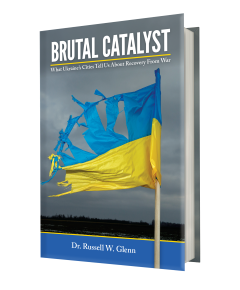Home > Open Access Journals > JSS > Vol. 6 > No. 2 (2013)
Author Biography
Michelle Spencer, President, MLSK Associates LLC, has worked on national security issues for more than seventeen years. In 2007-8, she was the primary author for a year-long study that resulted in U.S. Air Force Counterproliferation Center's Future Warfare Series Monograph #52, Public Resilience in CBRNE Events: Lessons Learned from Seven Cases (http://cpc.au.af.mil/PDF/monograph/52publicres.pdf). Her latest work on resilience is “Resilience to WMD: Communication and Active Participation Are Key,” in the Handbook of Emergency Response: Human Factors and Systems Engineering Approach, Taylor and Francis, forthcoming in August 2013.
DOI
http://dx.doi.org/10.5038/1944-0472.6.2.6
Abstract
In the spring of 1995 Japan experienced the world’s first major terrorist attack using chemical weapons by a little-known religious cult called Aum Shinrikyo. The attack on the Tokyo subway, which killed 13 people, was the first lethal case of a non-state actor using a chemical agent against a civilian population. In March 2011, following a 9.0 magnitude earthquake in Japan, the Fukushima Daiichi nuclear reactor experienced a full meltdown releasing radiation into the surrounding area. The seemingly unhurried government reaction provided conflicting information to Japanese citizens, slowing evacuation and protective actions. Government failure is cited as a significant factor in the severity of the nuclear disaster in three investigations conducted after the incident. This article defines resilience and raises the question of whether the U.S. government has the ability to address the issues raised by the two case studies. There are four primary lessons of these two case studies from Japan: Trust is essential; two-way communications are vital; someone or something will always unexpectedly fail to act appropriately, while others will provide surprising support and; finally, recovery is long-term.
Recommended Citation
Spencer, Michelle L.. "Lessons from Japan: Resilience after Tokyo and Fukushima." Journal of Strategic Security 6, no. 2 (2013)
: 70-79.
DOI: http://dx.doi.org/10.5038/1944-0472.6.2.6
Available at:
https://digitalcommons.usf.edu/jss/vol6/iss2/6


